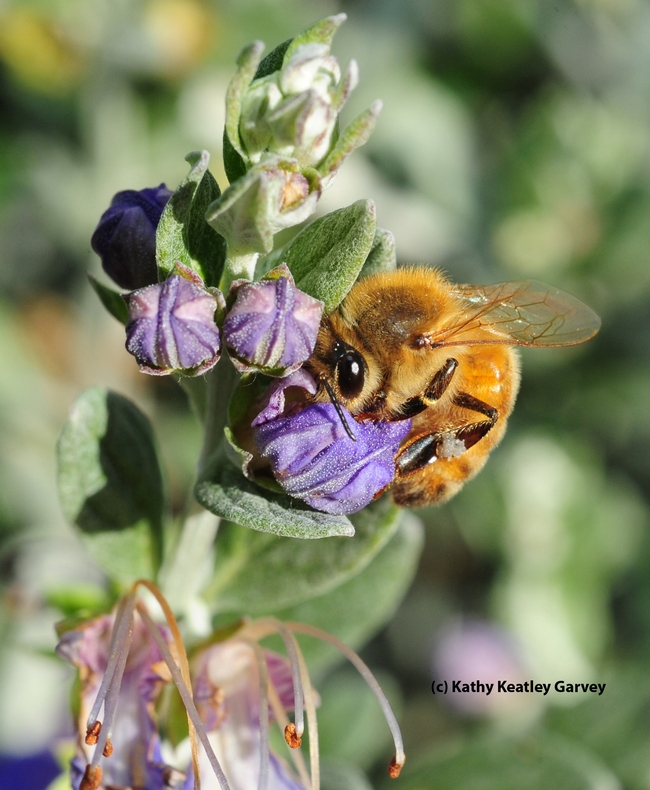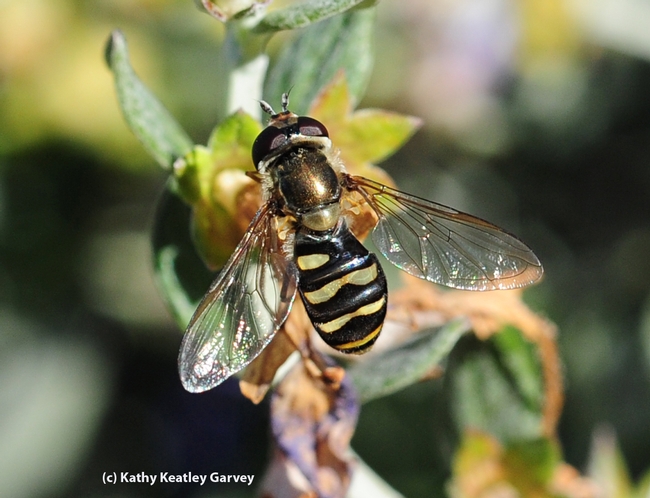The bush germander (Teucrium fruticans) is definitely a great fall-winter plant that's a magnet for bees. Just look at the bees that frequent the germander in the Häagen-Dazs Honey Bee Haven on Bee Biology Road at UC Davis.
As soon as the temperature rises to a sunny 50 or 55 (good bee-flying weather), the honey bees head over to the haven from the nearby Harry H. Laidlaw Jr. Honey Bee Research Facility.
Last Saturday's visit to the haven yielded an "out-to-lunch" bunch that included a dozen honey bees in the germander and one syrphid fly (aka flower fly or hover fly). Bumble bee aficionado Gary Zamzow, one of the volunteers in the haven, found something better: A bumble bee, a queen Bombus melanopygus or black-tailed bumble bee, foraging in the germander.
The germander bush is one of several plants blooming in the haven in the dead of winter, according to Missy Borel, haven volunteer and program manager of the California Center for Urban Horticulture at UC Davis. Among the others blooming or just finishing a bloom:
- Autumn sage (Salvia greggii)
- Blanket flower (Gallardia)
- Bulbine (Bulbine frutescens)
- Butterfly rose (Rosa mutabilis)
- Catmint (Nepeta)
- Cleveland sage (Salvia clevelandii)
- Coreopsis (Coreopsis)
- Red hot poker (Kniphofia)
- Dwarf plumbago (Ceratostigma plumbaginoides)
- Oregano (Origanum vulgare ‘Betty Rollins’ )
- Lavender (Lavandula)
- Rosemary (Rosmarinus)
- Sage (salvia)
- Seaside daisies (Erigeron glaucus 'Wayne Roderick')
"Honey bees in California will seek forage on warm sunny days in California," Thorp noted. "Some Asteraceae and mint family flowers will continue blooming and provide some food for honey bees, but they primarily rely on their stored honey to get them through the winter."
Attached Images:

